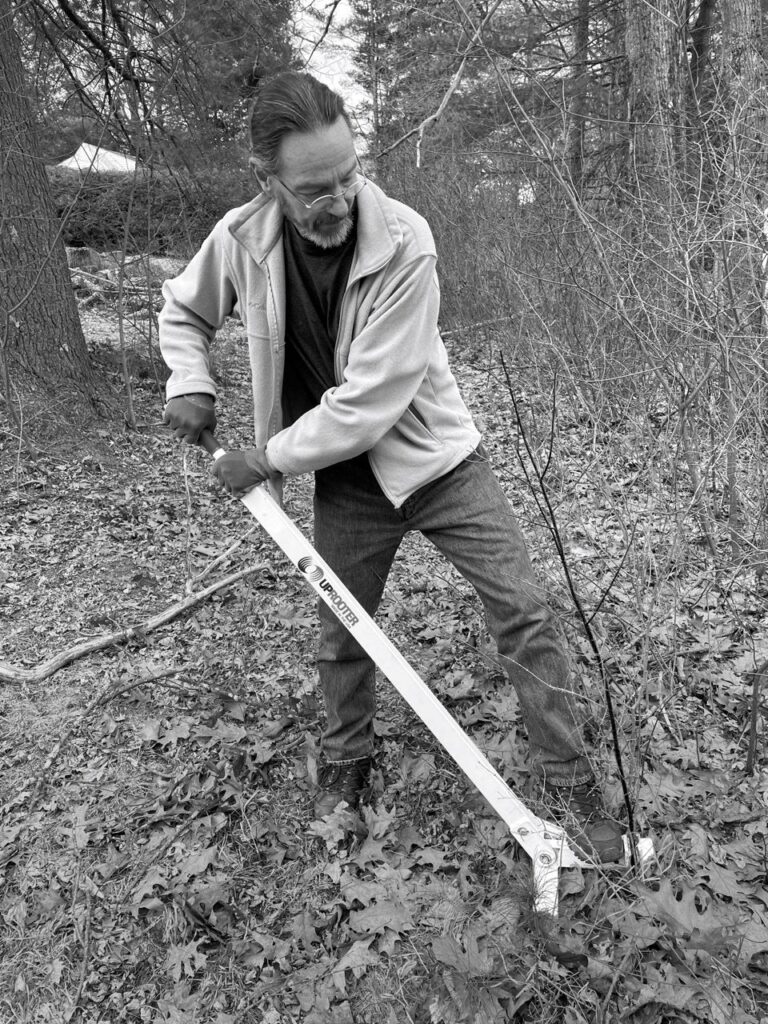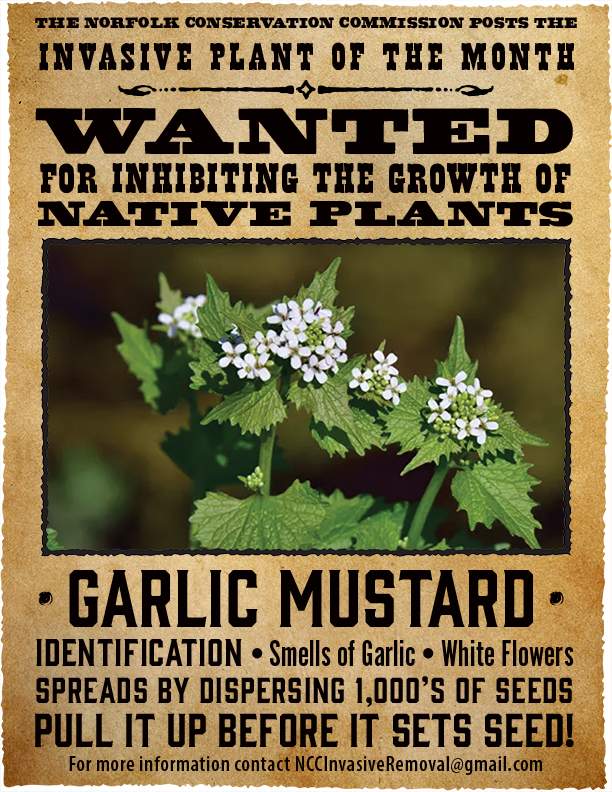It’s Only Natural: Target Invasives to Help Native Plants Support Native Wildlife
By Jill Chase

Bill Ticineto uses an uprooter to remove an invasive buckthorn sapling.
It’s that time of year when local gardens and woodlands start to wake up after a long winter nap. Everyone begins to notice the warmth of the sun and the song of birds. Now imagine that the birdsong isn’t there. According to the Connecticut Audubon Society, North America has lost 30 percent of its native birds in just 50 years. That’s three billion fewer birds than in 1970. How can this be happening right in Norfolk’s own backyard? What can be done to stop it?
Habitat loss is one of the main culprits behind bird decline. Everyone can do their part to slow avian extinction by providing suitable habitat for wildlife on their properties by removing invasive plants. Invasive plants are species from foreign lands that, when introduced to a new area, outperform and displace native species. Over time, they escape to the wild and choke out area woodlands and
waterways.
These invasive species don’t work in harmony with native insects and animals, and native wildlife find
they don’t have the food and shelter they need to thrive. For instance, a native oak can support
hundreds of native species, but an invasive buckthorn can actually make birds sick. Native plants are
essential to native birds, butterflies and pollinators, as well as being beautiful and easy-to-care-for
additions to the landscape. So, win-win.
On Saturday, May 4, at 10 a.m., at the Hub, Bill Ticineto, a member of the Norfolk Conservation
Commission (NCC), will give his popular talk, “Norfolk’s Six Worst Invasive Plants and How to Remove
Them.” Ticineto, an enthusiastic amateur naturalist, has over 20 years’ experience successfully
battling invasives on his property. His goal, he says, is to arm everyone in town with the information and
confidence to get the upper hand on invasives on their property. He will explain how to identify, remove
and dispose of Norfolk’s top bad plants. If that isn’t enough, he will also schedule visits to the yards of
interested parties to demonstrate his invasive identification and removal techniques.
“My goal is to educate Norfolk residents about invasives and how to remove them,” says Ticineto. But,
he warns, “Once you see them you can’t un-see them.” Ticineto is inspired to protect Norfolk’s beautiful
landscape, saying, “We’re so lucky to live here surrounded by nature. I feel a responsibility to be a good
steward of the land.”
The NCC annual plant exchange will additionally be scheduled for some time this spring. This very
popular program gifts a free native plant to any resident who removes an invasive plant from their
property. Commission members will also be available to answer any questions about native plants.
As a community, Norfolk can work together to promote biodiversity and keep invasives from taking over
the town’s precious woodlands, meadows and wild areas.

